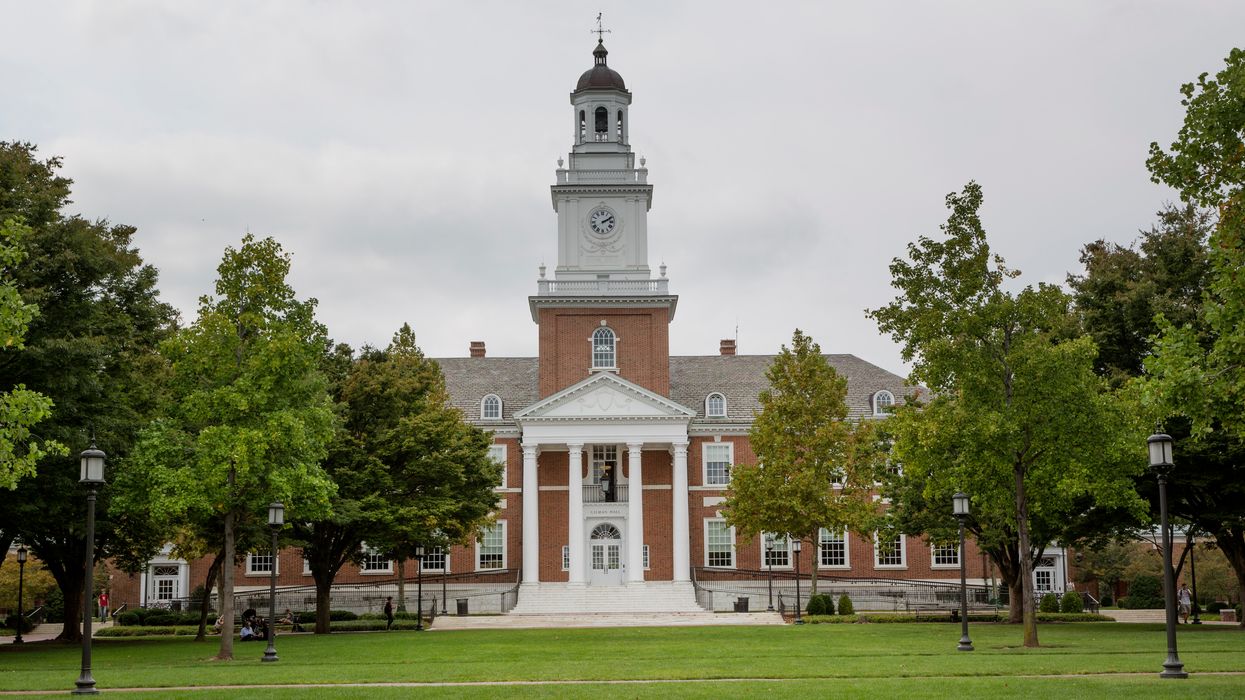
Carol M. Highsmith/Buyenlarge/Getty Images

They also want the school to scrap its plans for an armed security force
Students at John Hopkins University, calling for the school to stop cooperating with Immigration and Customs Enforcement, have shut down the main administrative building on campus until their demands are met. This building houses the university's financial aid offices, as well as those related to disability services and student visas.
In early April, students at Johns Hopkins University began protesting the school's cooperation with ICE. They also took issue with the school's decision to hire its own private armed police force. Around the time the protests started, a piece of legislation authorizing Johns Hopkins to have armed security at its campuses and medical center received bipartisan support in Maryland's government and was signed into law by Republican Gov. Larry Hogan. The student protesters have claimed that this security force would lead to racial profiling.
The protesters have also called for justice for Tyrone West, a black man who died in Baltimore at the hands of police in 2013. Both the Hopkins Coalition Against ICE and Students Against Private Police groups began a sit-in to force the school to meet their demands.
A month later, that sit-in is still going on. The students have completely locked down the university's Garland Hall, causing the university to suspend all operations in the building.
The protesting students have claimed that the school turned off the air conditioning in Garland Hall to try to force them out. A spokeswoman for the school told the Baltimore Sun that this was not accurate.
"The utilities in Garland Hall are functioning normally," she said. "The HVAC system is currently programmed to a temperature that is cooler than is typical for the building when it is closed, and is well within regulatory requirements."
On Friday, Johns Hopkins University President Ronald Daniels wrote that the protesters at the college had:
declared a takeover of the full building, forced the evacuation of employees, blocked ingress and egress, and, in contravention of the express direction of the city fire marshall, chained shut all exterior doors. Yesterday, the university had no choice but to close the building and suspend or relocate a broad range of crucial student services—financial aid, disability services (including administration of exams), academic advising, and international services (such as student visas), among others. We have also had to take steps to support the many staff who were subject to unacceptable harassment and intimidation by protesters.
He said that the school had tried to "accommodate" the "free expression" of the students and said that school leadership was "open to further dialogue on these and other important issues." However, he added:
Regrettably, the occupation of Garland has moved beyond peaceful protest and civil disobedience. Safety and security are imperiled by protesters' refusal to comply with fire safety and emergency protocols and to respect the needs of their fellow students in accessing university services.
The protesters objected to this description of them, in a letter of their own that they released on Twitter on Saturday, the protesters said that they were "disturbed by the distorted narrative of the Garland Sit-in and Occupation" from Daniels's letter. They demanded that university leadership "negotiate now" and grant "amnesty for any and all participants and visitors."
On Sunday, Daniels and Sunil Kumar, JHU provost and senior vice president for academic affairs, wrote another letter, extending a "good faith" invitation for a meeting with any "who has or is willing to leave the occupation shortly."